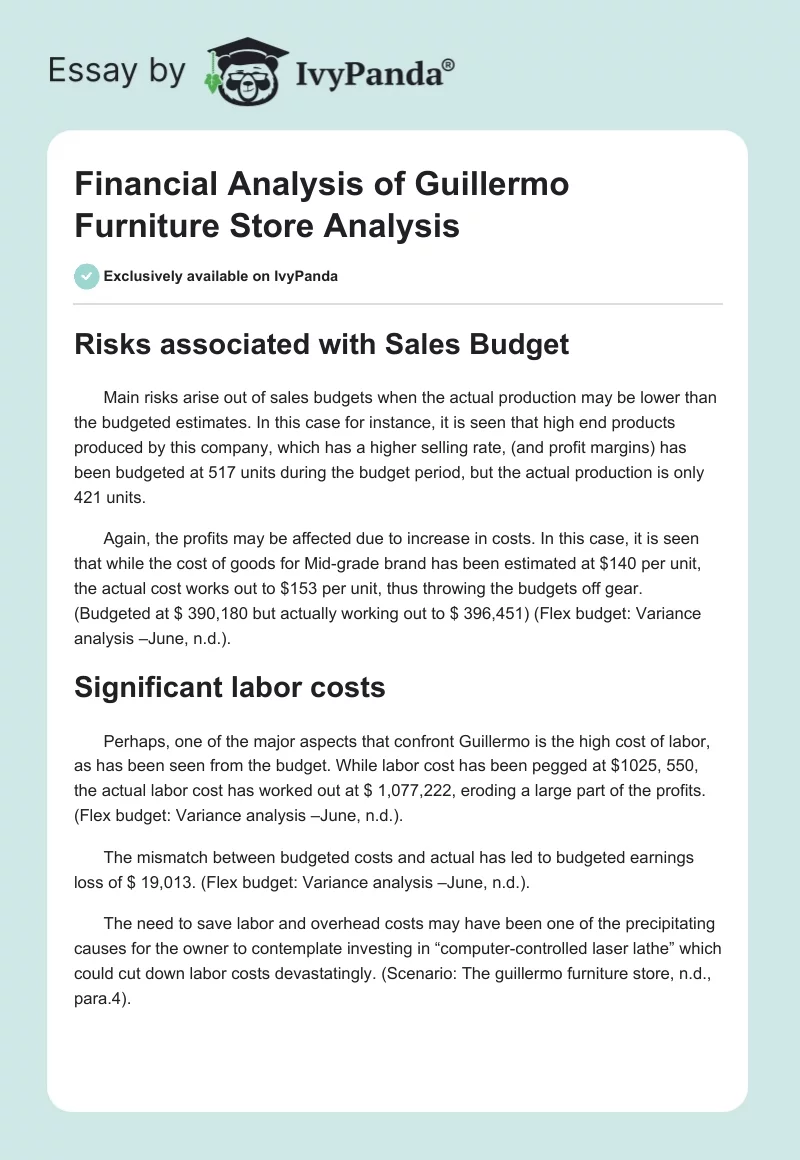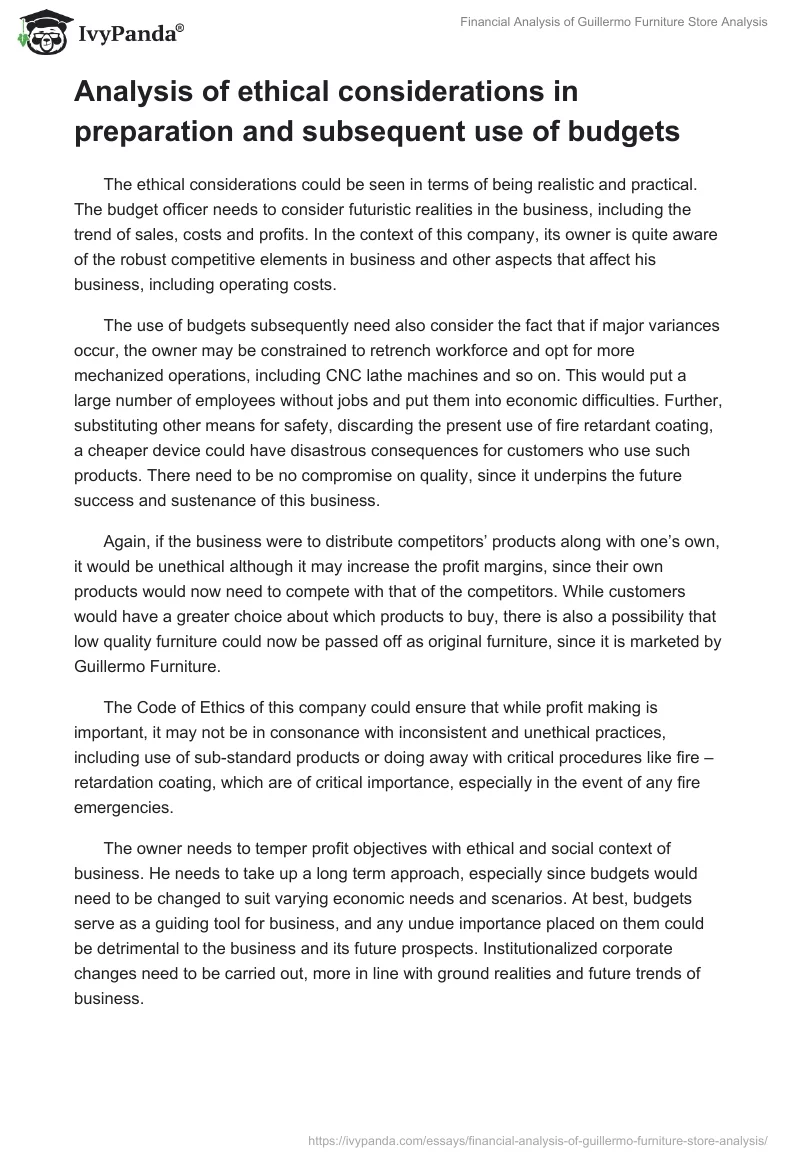Risks associated with Sales Budget
Main risks arise out of sales budgets when the actual production may be lower than the budgeted estimates. In this case for instance, it is seen that high end products produced by this company, which has a higher selling rate, (and profit margins) has been budgeted at 517 units during the budget period, but the actual production is only 421 units.
Again, the profits may be affected due to increase in costs. In this case, it is seen that while the cost of goods for Mid-grade brand has been estimated at $140 per unit, the actual cost works out to $153 per unit, thus throwing the budgets off gear. (Budgeted at $ 390,180 but actually working out to $ 396,451) (Flex budget: Variance analysis –June, n.d.).
Significant labor costs
Perhaps, one of the major aspects that confront Guillermo is the high cost of labor, as has been seen from the budget. While labor cost has been pegged at $1025, 550, the actual labor cost has worked out at $ 1,077,222, eroding a large part of the profits. (Flex budget: Variance analysis –June, n.d.).
The mismatch between budgeted costs and actual has led to budgeted earnings loss of $ 19,013. (Flex budget: Variance analysis –June, n.d.).
The need to save labor and overhead costs may have been one of the precipitating causes for the owner to contemplate investing in “computer-controlled laser lathe” which could cut down labor costs devastatingly. (Scenario: The guillermo furniture store, n.d., para.4).
Analysis of ethical considerations in preparation and subsequent use of budgets
The ethical considerations could be seen in terms of being realistic and practical. The budget officer needs to consider futuristic realities in the business, including the trend of sales, costs and profits. In the context of this company, its owner is quite aware of the robust competitive elements in business and other aspects that affect his business, including operating costs.
The use of budgets subsequently need also consider the fact that if major variances occur, the owner may be constrained to retrench workforce and opt for more mechanized operations, including CNC lathe machines and so on. This would put a large number of employees without jobs and put them into economic difficulties. Further, substituting other means for safety, discarding the present use of fire retardant coating, a cheaper device could have disastrous consequences for customers who use such products. There need to be no compromise on quality, since it underpins the future success and sustenance of this business.
Again, if the business were to distribute competitors’ products along with one’s own, it would be unethical although it may increase the profit margins, since their own products would now need to compete with that of the competitors. While customers would have a greater choice about which products to buy, there is also a possibility that low quality furniture could now be passed off as original furniture, since it is marketed by Guillermo Furniture.
The Code of Ethics of this company could ensure that while profit making is important, it may not be in consonance with inconsistent and unethical practices, including use of sub-standard products or doing away with critical procedures like fire –retardation coating, which are of critical importance, especially in the event of any fire emergencies.
The owner needs to temper profit objectives with ethical and social context of business. He needs to take up a long term approach, especially since budgets would need to be changed to suit varying economic needs and scenarios. At best, budgets serve as a guiding tool for business, and any undue importance placed on them could be detrimental to the business and its future prospects. Institutionalized corporate changes need to be carried out, more in line with ground realities and future trends of business.
Reference List
Flex budget: Variance analysis –June. (n.d.).
Scenario: The guillermo furniture store. (n.d.). ACC/561 Accounting.


